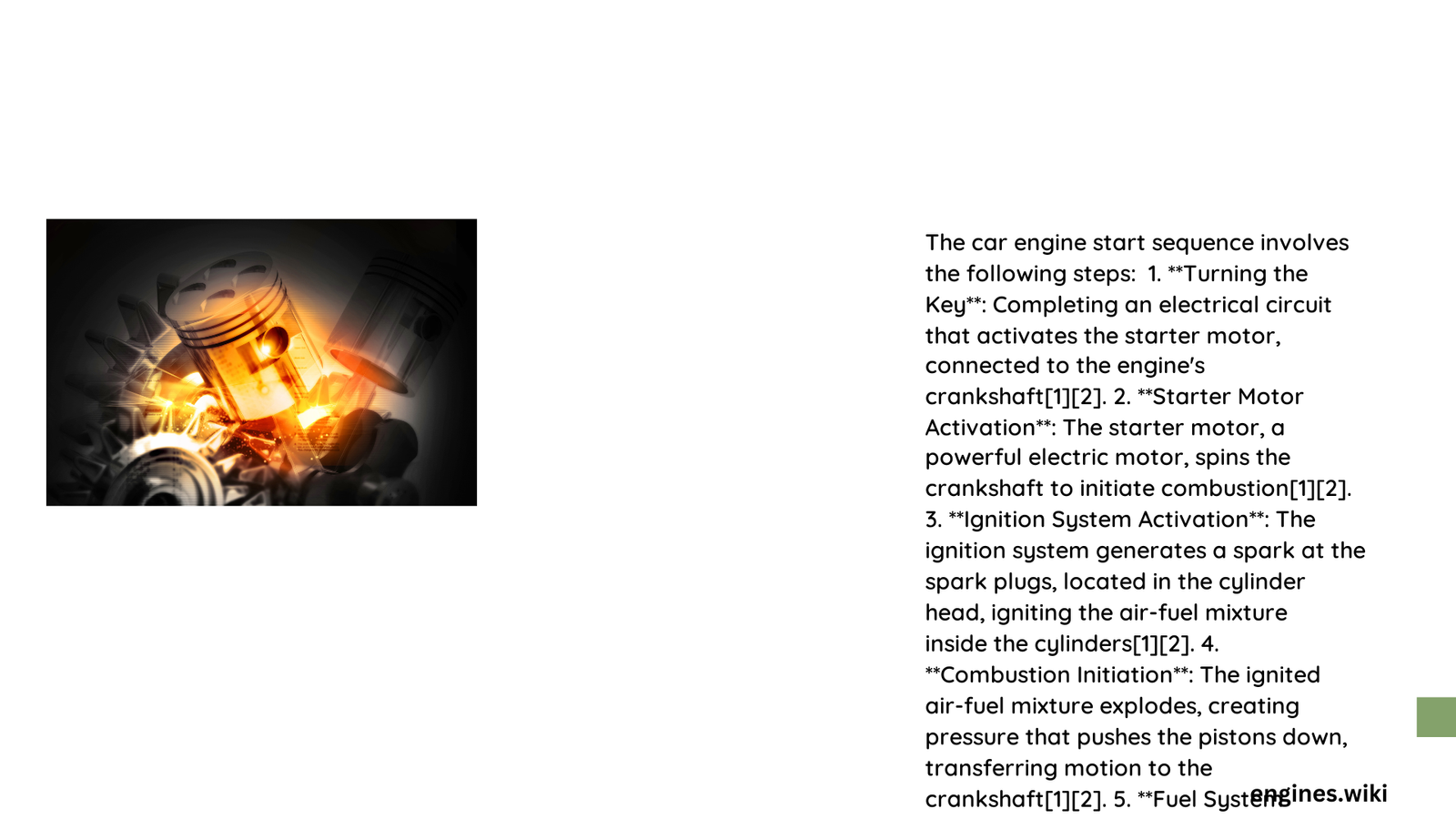The car engine start sequence is a complex, precisely choreographed mechanical ballet involving multiple systems working in synchronized harmony. When a driver turns the key, an intricate process begins: electrical signals activate the starter motor, which rotates the engine’s crankshaft, initiating compression and spark generation that ultimately brings the engine to life. Understanding this sequence is crucial for diagnosing potential starting issues and maintaining optimal vehicle performance.
What Happens During Initial Engine Startup?
Preparing for Engine Ignition
The car engine start sequence involves several critical stages that transform electrical energy into mechanical motion. Let’s break down this fascinating process step-by-step:
Electrical System Preparation
| Component | Function | Voltage Requirements |
|---|---|---|
| Battery | Primary power source | 12-14.4 volts |
| Starter Solenoid | Engage starter motor | 12 volts |
| Ignition Coil | Generate high-voltage spark | 12 volts → 40,000 volts |
Key Steps in Mechanical Activation
- Battery Power Transmission
- Driver turns ignition key
- Electrical current flows from battery
-
Starter solenoid receives activation signal
-
Starter Motor Engagement
- Pinion gear extends
- Connects with engine’s ring gear
- Begins crankshaft rotation
How Does Compression Trigger Engine Start?
When the starter motor rotates the crankshaft, it initiates the critical compression stroke. This process involves:
- Precise piston movement
- Fuel-air mixture compression
- Spark plug ignition
- Combustion chamber activation
Timing Precision Requirements
- Top Dead Center (TDC): Critical alignment point
- Initial Timing: Typically 10 degrees Before Top Dead Center (BTDC)
- Distributor Adjustment: Crucial for smooth ignition
What Are Common Starting System Challenges?
Potential issues during the car engine start sequence include:
- Weak battery voltage
- Corroded electrical connections
- Faulty starter motor
- Misaligned distributor
- Worn spark plugs
Diagnostic Troubleshooting Approach
- Check battery voltage (should be 12.6+ volts)
- Inspect starter motor connections
- Verify distributor timing
- Test spark plug condition
- Examine fuel system functionality
Technical Specifications for Reliable Starting
Recommended Specifications:
– Battery Voltage: 12.6-14.4 volts
– Starter Motor Torque: 10-20 Nm
– Spark Plug Gap: 0.028-0.060 inches
– Cranking Speed: 200-250 RPM
Expert Maintenance Tips

- Regularly check battery health
- Clean electrical connections
- Maintain proper distributor timing
- Replace spark plugs at recommended intervals
- Use high-quality engine oil
Cost Considerations for Repairs
| Component | Average Replacement Cost | Labor Time |
|---|---|---|
| Starter Motor | $100 – $300 | 1-2 hours |
| Ignition Coil | $50 – $200 | 30-60 minutes |
| Spark Plug Wires | $20 – $100 | 1-2 hours |
Conclusion
Understanding the car engine start sequence empowers vehicle owners to diagnose issues, perform preventative maintenance, and appreciate the remarkable engineering behind modern automotive technology.
